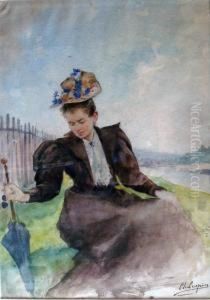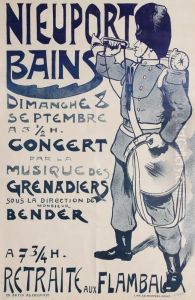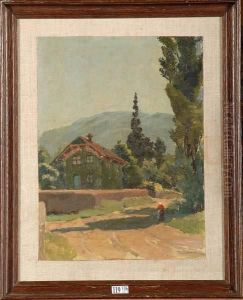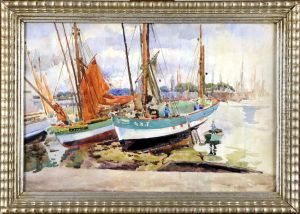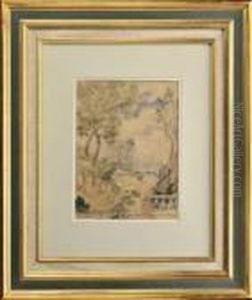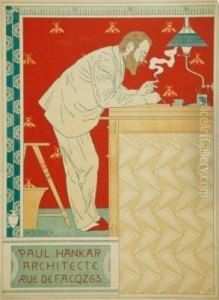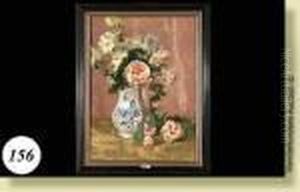Adolphe Crespin Paintings
Adolphe Crespin was a Belgian artist and decorative designer born on December 18, 1859, in Saint-Josse-ten-Noode, Brussels. He is often associated with the Art Nouveau movement, which was at its peak from the 1890s to the early 1900s. Crespin studied at the Académie Royale des Beaux-Arts in Brussels, where he developed his skills in drawing and painting.
His career took a significant turn when he became associated with other Belgian artists of the time, like Victor Horta and Henry Van de Velde, who were pioneers of the Art Nouveau style. Crespin’s work was characterized by its organic forms, elegant lines, and incorporation of natural motifs, which were indicative of the Art Nouveau aesthetic.
Crespin was also recognized for his contributions to graphic design and illustration. He created numerous posters, book designs, and other graphic materials that reflected the sinuous lines and stylization typical of the period. His works were not only limited to decorative arts; he also painted murals and created stained glass windows for various buildings, including churches and private residences.
During his career, Crespin taught at the Académie Royale des Beaux-Arts, influencing a new generation of artists with his expertise in Art Nouveau design principles. Despite his involvement in the movement, Crespin's work also showed an interest in traditional elements, which he often integrated into his designs in a harmonious blend of the old and the new.
Adolphe Crespin's contribution to the world of art and design has been acknowledged through exhibitions and retrospectives, which showcase his versatility and his capacity to adapt his style to different mediums. He passed away on February 18, 1944, in Ixelles, Brussels. Today, his works are considered an essential part of the Belgian Art Nouveau heritage and continue to be celebrated for their beauty and historical significance.
